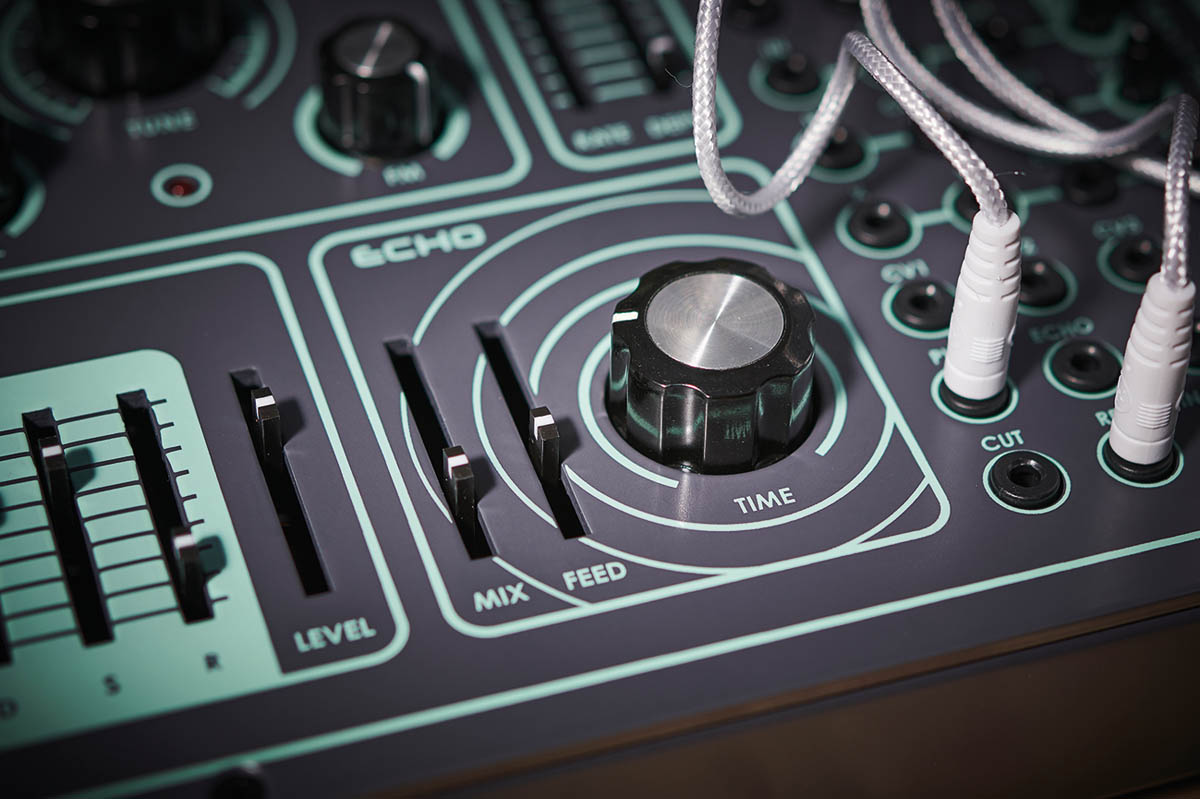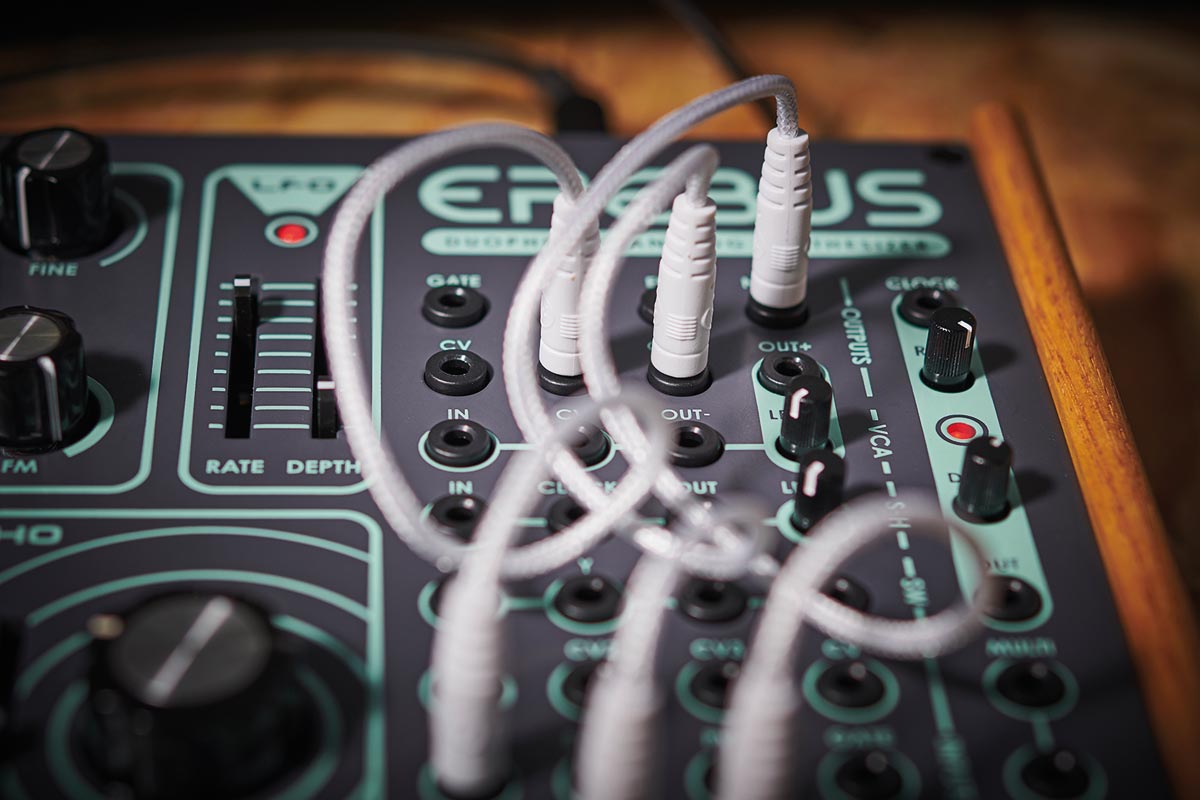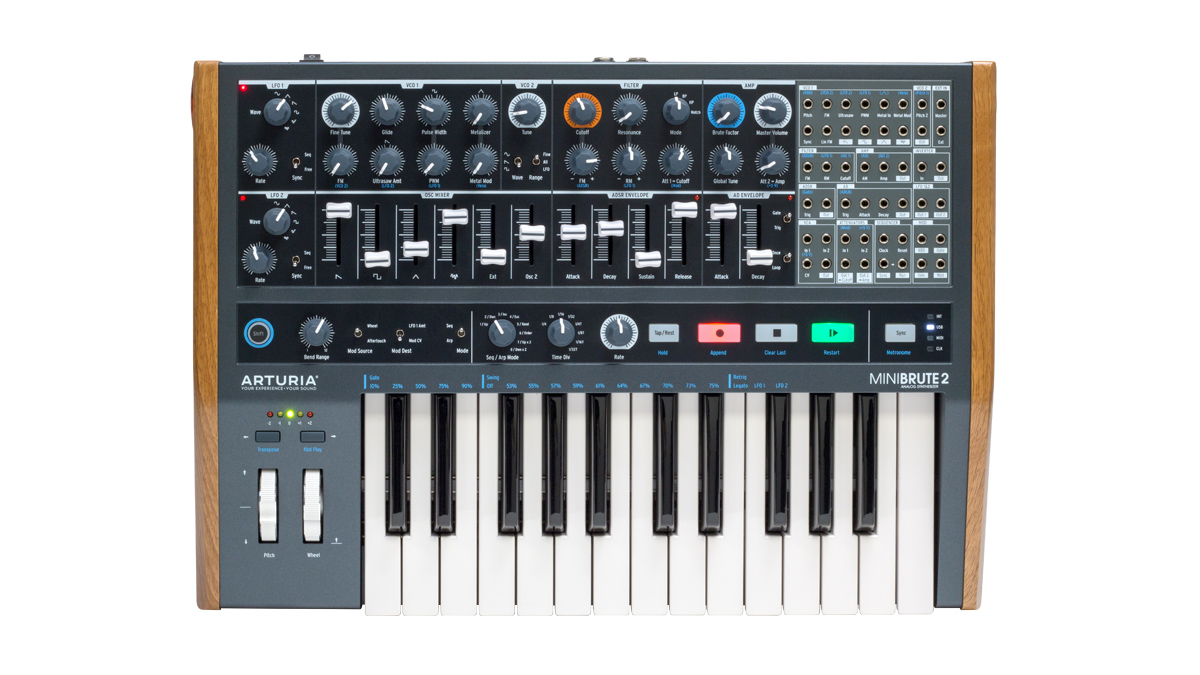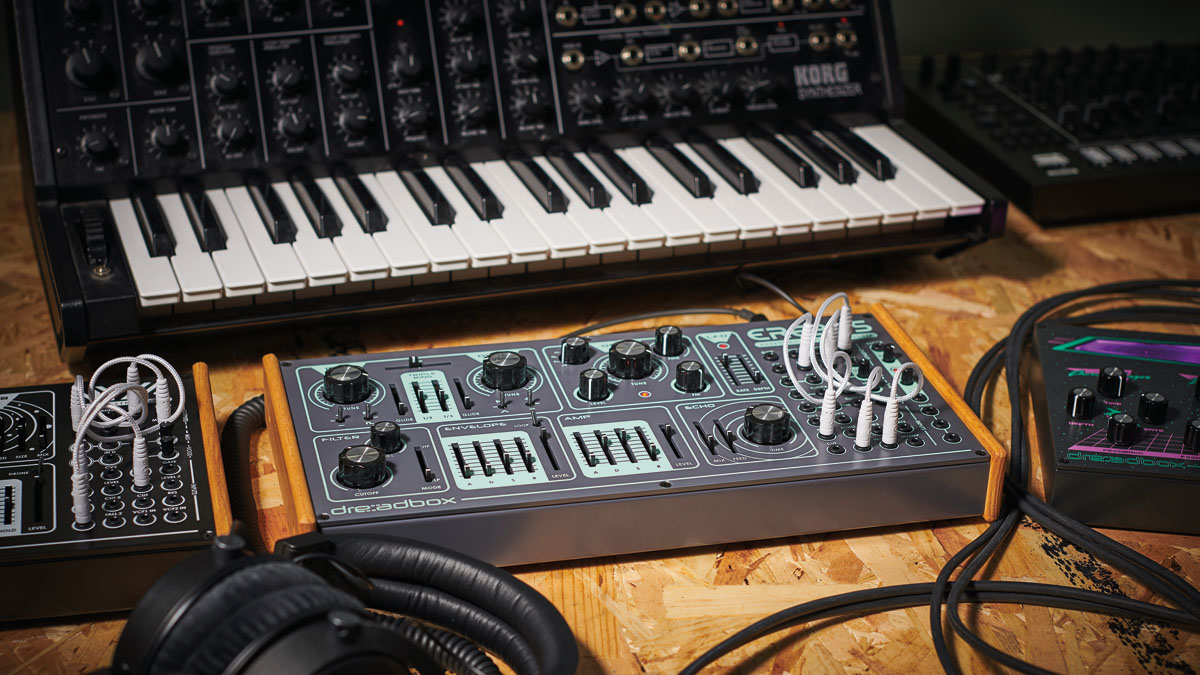MusicRadar Verdict
The Erebus V3 is a powerful, well-specified and flexible synth, capable of both conventional and more experimental tones
Pros
- +
Three oscillators with a wide range of interconnected modulation options.
- +
Panel with 35 patch points that also includes addition processing and control elements.
- +
Lo-fi echo with CV control of delay time.
Cons
- -
Filter resonance present even with control set to zero.
- -
Oscillator glide only works when Erebus is played via MIDI.
MusicRadar's got your back
What is it?
Dreadbox are on a winning streak when it comes to making interesting analogue kit. As well as creating modular gear, over the last few years they have released a stream of sound-generating modules, effects and even some DIY kits.
Here we look at the Erebus Version 3 desktop synthesiser. While versions 1 and 2 of this synth were very similar to each other in terms of looks and functionality, the new Erebus has been expanded both physically and functionally – with the most obvious changes being an additional oscillator and envelope plus greater patching capability.
In terms of raw sound generation the Erebus is based around the two-oscillator design from before, with each oscillator getting its own tuning and waveform selection controls, and with a mix slider setting the balance between the two. Each also has a dedicated glide control (which sadly only works when the synth is under MIDI control).
The separate Osc 3 section really makes a difference to the flexibility of Erebus
An interesting addition though is the Triple Ring section, which allows you to use the pulse waveform from Osc 1 to switch between the triangle waveform of the Osc 2 and sine from a new additional oscillator section. In other words, this is a form of audio rate amplitude modulation, and allows for a lot of scope in creating weird, clangorous, undulating and engaging tones – especially given the added flexibility of the multiple patching points.

Additional modulation functionality for the two core oscs, and a third multi-waveform osc that can also be used as a second LFO.

Here you’ll find a monophonic lo-fi delay with dedicated controls for mix, feedback and delay time.

The 35-point patchbay allows you to access multiple circuit points in the control/signal paths, and contains extra functionality of its own.
Performance and verdict
At this stage, it is worth detailing the separate Osc 3 section, which really makes a difference to the flexibility of Erebus. Here you will find six electable waveforms, tuning and level controls, as well as an FM knob.
The large tuning range of this oscillator allows it to extend down into very slow LFO modulation territory (with a cycle time of nearly two minutes). Like Osc 1, the pulse width can be modulated using patch points, but here you’ll also find a ‘supersaw’ wave that can come under PW control as well – and this alone makes for some very thick tones.
The FM control determines the strength of frequency modulation from Osc 3 to Osc 1 and 2. You can see already, that without even reaching for a patch cable there is quite bit of interaction possible between the various audio sources.
Next we come to the filter section; this is of a 2-pole (12dB-octave) low/high-pass design, featuring knobs for cutoff and resonance and a slider to move continuously from low-pass to high-pass modes (with the middle ground creating a notch filter, though sadly there is no band-pass option).
At higher resonance settings, the filter can be driven into self-oscillation – in effect creating a fourth audio source – though, oddly, a resonant bump is always present, even when the Res knob is set to zero. This is frustrating and odd, given that controlling resonance directly via its patch point allowed it to be dialled out altogether (with a peak reduction of around 8dB).
Although Erebus v3 uses analogue circuitry for most of its sound generation, the envelopes are digitally generated. There is a looping ADSR envelope hardwired to filter cutoff, and another four-stage type for amp duties (an expansion of the two-stage envelope on v1/v2). You also get a basic triangle wave LFO, which is rooted directly to control the frequency of all three oscillators.

• Artruria MiniBrute 2
An expanded synth engine, semi-modular architecture and flexible control options make this a seriously competitive monosynth.
• Behringer Neutron
The Neutron is a fun, useful and flexible synth. Fantastic value for money, we suspect this will prove to be an immensely popular product.
However, such is the flexibility of the Erebus that the looping filter envelope can also be used as an LFO-style source – and not forgetting Osc 3 and the onboard clock generator, which can both also be used as modulation sources.
Finally we cut to the effects section of the unit, which is inherited from earlier versions and is based around a simple lo-fi delay line, with mix feedback and time controls.
Although it is basic, I would choose this type of effect over a more fully-featured built-in digital reverb every time – especially as the delay time can be modulated via a dedicated CV input, allowing you to create chorus flanging or just complete sonic mayhem as required.
Taking just the features covered so far, the Erebus is powerful and fun to use, however it has a few other tricks up its sleeve. It has onboard MIDI to CV/gate conversion, which is used to control overall pitch, trigger envelopes and provide a separate modulation output derived from incoming Mod Wheel data.
Switching one of the rear panel dip switches allows the synth to operate in duophonic mode, where Osc 1 and 3 play the lowest note and Osc 2 the highest – though, with only one VCA and VCF, envelopes are re-triggered with each note played.
Turning to the 35-point patchbay you will also discover that this goes beyond being a simple access panel and offers some extra and interesting functionality all of its own (see left). Overall, the Erebus V3 is an excellent synthesiser with real scope for in-depth sound creation.
MusicRadar verdict: The Erebus V3 is a powerful, well-specifi ed and flexible synth, capable of both conventional and more experimental tones.
Hands-on demos
Bonedo Sythnesizers
Gear4Music
The web says
"The synthesis is never complicated but still contains surprise luxuries such as the twin envelopes and glide controls. Then again, there are omissions that frustrate, not least the lack of auto-glide, which is restrictive for those of us keen to employ the Erebus as a source of monster acid bass."
Sound on Sound
Specifications
- KEY FEATURES: 3 Oscillators, Auto Tuning Function, Triple ‘Ring Modulator’, 12dB Resonating Multimode Filter, Dedicated ADSR Envelope to AMP, Lo-Fi Echo, ADSR Envelope with Loop Function, White Noise Generator, 3 LFOs, Individual, Patchable VCA, Analogue Clock Generator, Patchable Sample & Hold, 35 Patch Points
- DIMENSIONS: 350 x 180 x 55mm
- WEIGHT: 2.38kg
- CONTACT: Dreadbox
“We were arguing a lot and we were miserable”: How Green Day exceeded expectations with their most ambitious song
"There’s plenty for us guitarists to learn – and ‘less is more’ is the overriding lesson": how to play like George Harrison on The Beatles' Abbey Road
“They didn’t like Prince’s bikini underwear”: Prince’s support sets for the The Rolling Stones in 1981 are remembered as disastrous, but guitarist Dez Dickerson says that the the crowd reaction wasn’t as bad as people think










